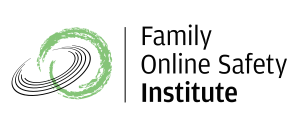 [This blog post originally appeared on Good Digital Parenting.]
[This blog post originally appeared on Good Digital Parenting.]
There are few moments in a child’s life that are more momentous than when he or she first learns to read. When a child learns how to decipher the odd squiggles on a printed page (or increasingly, a digital screen), it opens up an enormous world of information, learning, and entertainment. It’s a magical, powerful accomplishment.
Like so many other skills, simply learning how to read is merely the first step on a long intellectual journey. Over time, children learn to tell the difference between fiction and non-fiction, to evaluate the source of the information or literature (some authors are better writers than others, or more authoritative, or more influential), and to compare the information that they read in one book with the information contained in others.
Young readers, of course, don’t need to worry about those issues, because the adults in their world curate the books that they read. Parents and other family members provide the first picture books and early readers, and then when kids head off to school, they are exposed to books that have been carefully chosen by their school’s teachers and librarians. In general, a child’s transition from a brand new reader to an adult capable of understanding and evaluating the value of what he or she reads is a well-established and relatively orderly process. Virtually all kids, of course, do some exploration of literature not necessarily approved by adults (my main detour was into sci-fi and fantasy), but that’s part of the learning process. After all, it’s harder to recognize really good literature (say, Jane Austen or Thomas Hardy) if you haven’t been exposed to a little schlock (I’d name names, but honestly, I don’t remember the authors of the worst pulp fiction I read as a teen).
But as is true in so many other ways, the digital revolution is upending what was once a relatively logical and deliberate process. As soon as a child is able to read, he or she not only has access to a world of literature, but also to a rapidly-growing universe of content on the Internet. Given the remarkably young ages at which kids are starting to use Internet-connected devices (the current average is around 11 months old), the odds are far too good that young and inexperienced readers will encounter material far beyond their intellectual and emotional development.
This shift has forced adults to adjust their expectations and assumptions regarding young readers. There was a great comfort in our ability to leave a child to his or her own devices next to a bedroom bookshelf, or in a well-stuffed corner of the local library. But that ship has sailed; it is difficult, if not impossible, to curate the Internet in the same way that we have shaped our children’s libraries. The reality is that any kid who can read and who has access to an Internet-connected device needs far more active supervision and guidance than even the most adventurous book reader.
The concept of literacy, of course, is not limited to merely understanding the words on the page. It also encompasses an understanding of the context of written material, the authoritativeness of the work, and its fundamental credibility. Again, it was easier to help kids learn those concepts when written materials originated from a relatively limited number of sources, the majority of which were moderated by trained professionals. The democratization of publishing made possible by the Internet has had a lot of benefits, but an increase in the reliability of content has not been one of them.
Both parents and schools need to make digital literacy (and literacy in general) a core element of childhood education. Parents can get their children off to a good start by slowing the initial use of electronic devices, and by carefully supervising what children read when they do start tapping and swiping their way into the virtual world. Amazon.com has taken a good step in this direction by offering its Kindle “FreeTime” software, which enables parents to curate content for their children (books, movies, and games), as well as set time limits for each type of media.
As children mature, parents should spend time talking to their children about issues like credibility and reliability, and help them to understand that not everything they read online is necessarily true. This probably won’t be a terribly difficult lesson; kids innately understand that people (particularly their peers) sometimes say things that aren’t accurate. The chief hurdle is overcoming the implicit authority of the written word, whether it’s in a book or on a screen.
The goal here is not to turn our children into skeptics or cynics; a sense of wonder and an active imagination can be powerful attributes. But we are two decades into the iGen, and our soon-to-be digital citizens need the tools to separate the digital wheat from the chaff. Digital literacy is not just a good idea; it’s rapidly becoming a critical skill for successful adults.